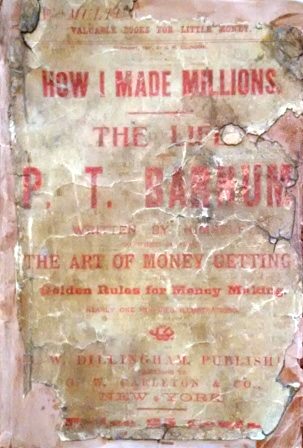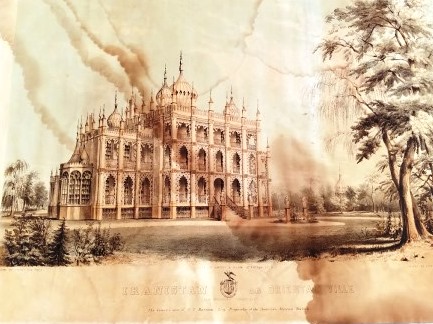By Rakashi Chand, Reader Services
March 7 1882
Sir,
I send Cards as you
request. I am too full
of elephants to command
much sentiment. All my
thoughts & cares at present are
locked up in two trunks – one of
which belongs to Jumbo & the
other to Little “Bridgeport.”
If both trunks arrive in
New York and our citizens
possess the keys – a world
of treasure will be exposed
to public view.Truly yours
P.T. Barnum
This letter by P. T. Barnum – showman, businessman, politician, and promoter extraordinaire – to an unidentified recipient illustrates the melding of his whimsical, magical world with the reality of his business and ventures.
As a forerunner of modern marketing, Phineas Taylor Barnum redefined what the world knew as entertainment. In an era when stars were born through broadsides, newspapers and posters, Barnum revamped the entertainment world with publicity campaigns that inundated the public, so much so that the audience already loved his performers before they ever graced the stage or entered the ring.
Such is the true story of Jenny Lind, “the Swedish Nightingale.” Considered by many to be the greatest singer of the 19th century, Lind toured the United States with Barnum in 1850.
Lind donated to charity her earnings from that tour. Mr. Barnum was less-known for his philanthropy and seemed more interested in the flow of money in the other direction, as one might surmise from the title of his book, How I made millions: the life of P. T. Barnum/written by himself; to which is added the art of money getting; or, golden rules for money making; nearly one hundred illustrations. Perhaps purposely titled to attract readers, the book is an anecdotal autobiography from which the reader learns little about the “art” of making money, but a great deal about Barnum’s life, experiences and thoughts. Included in the book is the story of Lind’s arrival in Boston, the subsequent performance, and just why she agreed to tour the country with P. T. Barnum:

The night after her arrival in Boston, a display of fireworks was given in her honor, in front of the Revere House, after which followed a beautiful torch-light procession by the Germans of that city.
On her return from Boston to New York, Jenny, her companion and Messrs. Benedict and Belletti, Stopped at Iranistan, my residence in Bridgeport, where they remained until the following day. The morning after her arrival, she took my arm and proposed a promenade through the grounds. She seemed much pleased and said “I am astonished that you should have left such a beautiful place for the sake of travelling through the country with me.”
The same day she told me in a playful mood, that she had heard the most extraordinary report. “I have heard that you and I are about to be married,” said she “now how could such an absurd report ever have originiated?”
“Probably from the fact that we are ‘engaged,’” I replied. She enjoyed a joke, and laughed heartily.
“Do you know Mr. Barnum, that if you had not built Iranistan, I should have never come to America for you?”
I expressed my surprise and asked her to explain.
“I had received several applications to visit the United States,” she continued “but I did not much like the appearance of the applicants nor did I relish the idea of crossing 3,000 miles of ocean; so I declined them all. But the first letter which Mr. Wilton, your agent, addressed me, was written upon a sheet of letter headed with a beautiful engraving of Iranistan. It attracted my attention. I said to myself, a gentleman who has been so successful in his business that as to be able to build and reside in such a palace cannot be a mere ‘adventurer’ So I wrote to your agent and consented to an interview, which I would have declined if I had not seen the picture of Iranistan!”

Indeed Iranistan was impressive! Designed by Leopold Eidlitz in 1848 and called “the oriental Palace of America” by the New York Herald, Barnum’s dream mansion drew throngs of tourists daily and was beautiful enough to bring the greatest singer in the world to America. Sadly the mesmerizing palace succumbed to fire less than a decade later in 1857.
The 2017 movie The Greatest Showman by 20th Century Fox is putting the spotlight back on P. T. Barnum, the Father of the Circus, where he is portrayed as a singing, dancing dreamer; although the real Barnum is so much more fascinating! In addition to the items shown above, the MHS houses many additional items related to P. T. Barnum and his amusements, most of which have already been digitized and are available online, like our Object of the Month for May 2017, When the Circus came to Boston: in Honor of Ringling Bros. and Barnum & Bailey’s Final Tour. To find more, take a look through our online catalog, ABIGAIL, then consider visiting the Library!


